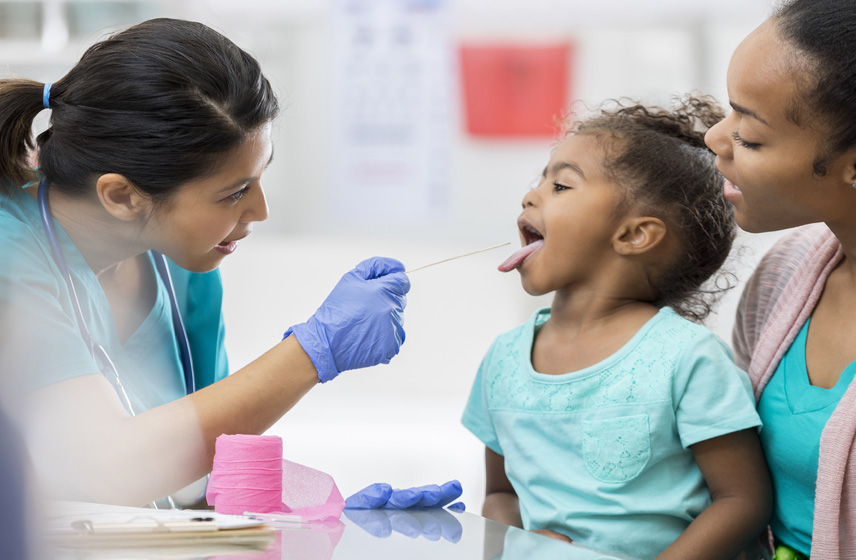A chlamydia test detects the bacteria that cause chlamydia, a sexually transmitted infection (STI). This test tells you if you have a chlamydia infection. Your provider takes a sample of urine or secretions from your vagina, penis or rectum and sends it to a lab for testing. Results are usually ready in a day. Avoid sex while waiting for results.
Advertisement
Cleveland Clinic is a non-profit academic medical center. Advertising on our site helps support our mission. We do not endorse non-Cleveland Clinic products or services. Policy
This test detects a chlamydia infection, the most common bacterial sexually transmitted infection (STI) in the world. A chlamydia test looks for the bacteria that cause the infection (Chlamydia trachomatis).
Advertisement
Cleveland Clinic is a non-profit academic medical center. Advertising on our site helps support our mission. We do not endorse non-Cleveland Clinic products or services. Policy
You should get a chlamydia screening if you:
For this test, you provide a urine sample. Or your provider takes a swab of fluid from your vagina, anus, throat or eye (depending on where the infection might be). Most often, you get this test in a healthcare provider’s office. But you may be able to do the test on your own using an at-home test kit.
Untreated chlamydia can cause serious health problems and infertility. A chlamydia infection doesn’t usually cause symptoms, so people may not know they have it.
If you have symptoms, they could include:
The most common type of chlamydia test is called a nucleic acid amplification test (NAAT). A NAAT detects the DNA of the bacteria that cause the chlamydia infection. You provide a sample of your pee (urine). Or a provider collects a sample of secretions from your vagina or urethra. A lab tests the sample for signs of the bacteria.
Advertisement
Less often, providers use a cell culture to test for chlamydia. A provider swabs your vagina, urethra or anus with a brush or blade to collect a cell sample. Then, they send the cells to a lab to test. If bacteria are present, they’ll grow, which indicates an infection. Providers may choose this type of chlamydia test to detect infections in your anus. Or they may use a cell culture to see how chlamydia treatments are working.
Ask your provider how you should prepare for a chlamydia test. Before the test, you may need to:
Your provider gives you a clean cup and asks you to pee in it. Follow your provider’s instructions carefully when collecting a urine sample. You’ll need to collect the pee as soon as it starts to come out (first-catch sample).
Instead of a urine sample, your provider might collect a sample of secretions from your genitals or anus. They gather this sample by rubbing a cotton swab on the inside of your vagina, penis or anus. If your provider suspects that you have a chlamydia infection in your eye, they’ll collect a fluid sample from your eye with a cotton swab.
If you’re using an at-home chlamydia test, you’ll collect the sample yourself. Be sure to follow the instructions on the test kit carefully.
After collecting a sample, your provider sends the sample to a lab. If you’re using an at-home kit, you will mail the sample to a lab. The lab will test the sample to check for bacterial DNA. Your provider will contact you when the results are ready and discuss the next steps.
While you’re waiting for results, it’s very important to avoid having sex. If you do have the infection and you have sex, you can spread it to others.
It usually takes about 24 hours to get results. Although they aren’t used often, rapid chlamydia tests can produce results in about 90 minutes. If your provider uses a cell culture, it may take about a week to get results.
A urine chlamydia test is less accurate than a vaginal or urethral swab test for chlamydia. A urine test is about 87% accurate, but a swab test is about 94% accurate.
A positive test means the lab detected the bacteria that cause chlamydia. This means you have a chlamydia infection and will need treatment with antibiotics. You should notify your sexual partners, so they can get tested, too.
After finishing treatment, you’ll need additional follow-up chlamydia tests. You may need another test three weeks after treatment and possibly another test three months later. Ask your provider when you should get a follow-up test.
Advertisement
If the results are negative, that means the lab did not detect the bacterial DNA. If you have symptoms of chlamydia but received a negative test result, see your healthcare provider.
Call your provider if you have any questions about the results of your test. If you received a negative test result, but you have symptoms — or if symptoms don’t go away after treatment, see your provider. Consider asking your provider about getting regular tests to check for STIs.
A chlamydia test is essential to limiting the spread of this sexually transmitted infection (STI). It’s especially important to get screened for chlamydia regularly if you’re at a higher risk of this STI. Untreated, the infection can cause health problems — and you can spread it to your partner(s). While you’re waiting for results and during treatment, avoid having sex. Wait until your provider says it’s safe to have sex again. Be sure to practice safe sex to avoid getting an STI.
Advertisement
Need care fast? Cleveland Clinic’s Express Care and Urgent Care locations treat everything from sprains to sinus infections — no appointment needed.

Last reviewed on 11/12/2024.
Learn more about the Health Library and our editorial process.